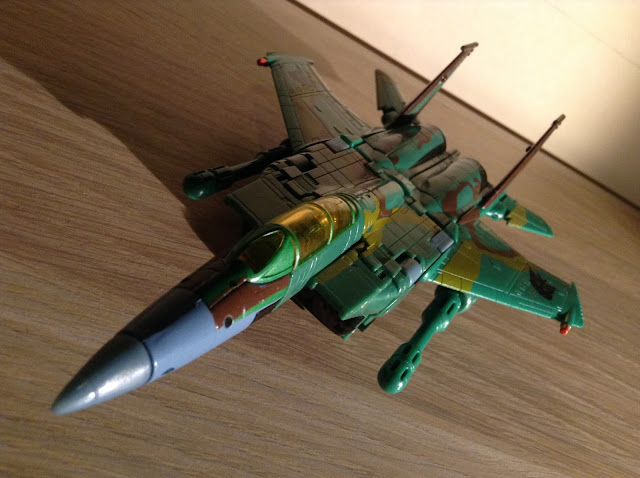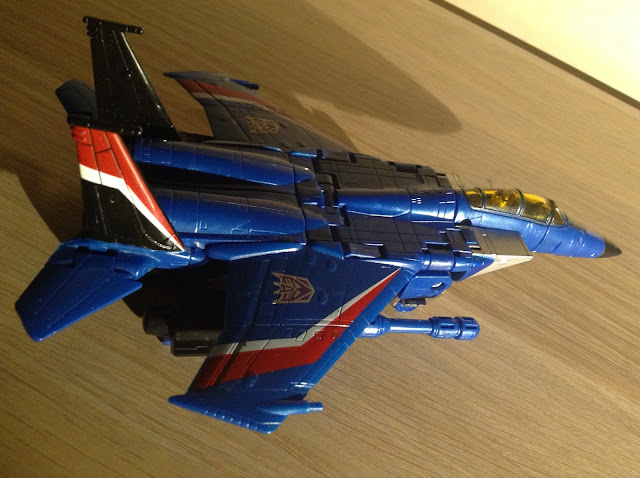- Leigh Gregurke
Our knowledge of the shapes
and forms that depict our physical reality underpin a vital series
of visual triggers or symbols, these assist us in creating initial
understandings and responses to visual media. From animation and
illustration to design and the creation of three dimensional objects;
the way we respond to shapes has its roots in semiotics. A map of
meanings allowing creators to design our emotive responses.
 |
| © 1984 Sunbow Productions, Marvel Productions, and Hasbro |
Perhaps the most Iconic character of the Transformers universe, Optimus Prime is constructed primarily of squared forms and rectangles with right angles framing his form. What do we think and know about squares? We associate them as symbols of solidity, dependability, strength, resilience, honesty, firmness, tradition. Squares have a sense of equality and rigidity.... but they are also kind of boring right? yes however... that's Prime. As a character he reflects many if not all of these traits, a representation of traditional leadership, heroism, a father like figure of dependability and safety. Ironhide often at Primes side shares similar motifs and traits but also demonstrates the way squares can channel a certain aggression, a dedication to traditional values and ideas and a gruff demeanor against change.
How do we view round shapes,
circles, spheres... They are kind of harmless, friendly, we think of
iconic characters including Micky Mouse, Casper the friendly Ghost, Winne the Pooh, Jack Black, Pandas, Mr Blobby, That cop from
Noddy... they are soft edged, safe and fun. Bumblebee as the
Volkswagen Beetle, even more rounded than usual in his stylized
design is a series of strong curves upon strong curves, his anthropomorphic form is not hugely different, round feet, rounded
torso, round head and his horns don't even feel sharp, they are cute
little curved extensions. Cosmos appears as a rounded almost kitsch U.F.O form and his personality is equally spacey, nonthreatening curious.
Shape can however challenge that expectation and our first perceived instinct with great effect. Unicorn, the giant Spherical Planet eating terror compensates ten fold by employing a black metal show quota of spikes across his form to obfuscate and defy his rounded form, his menace even grows as he sheds this form as he is revealed to not only be a planetary form but also a colossus anthropomorphic destroyer. Consider Cliffjumper, the red counterpart to Bumblebee. Is part of his character strength that he defies his shape? An exercise in contrast Cliffjumper is at odds with his stylized curves with his aggression and swagger but still, this trait works because of our assumptions on shape, the viewer sees the tension between shape and our expectations.
| © 1984 Sunbow Productions, Marvel Productions, and Hasbro. |
Shape can however challenge that expectation and our first perceived instinct with great effect. Unicorn, the giant Spherical Planet eating terror compensates ten fold by employing a black metal show quota of spikes across his form to obfuscate and defy his rounded form, his menace even grows as he sheds this form as he is revealed to not only be a planetary form but also a colossus anthropomorphic destroyer. Consider Cliffjumper, the red counterpart to Bumblebee. Is part of his character strength that he defies his shape? An exercise in contrast Cliffjumper is at odds with his stylized curves with his aggression and swagger but still, this trait works because of our assumptions on shape, the viewer sees the tension between shape and our expectations.
Analyzing the effect that shapes have on our perceptions raises interest in the design process and the history of Transformer character design. Did Bob Budiansky put initial character traits and ideas to the toys seen at the Tokyo Toy Fair based on these common responses? A lot is said of the cars vs jets subdivision but its more complex than that I believe. Consider a division of shapes and their meanings, a tension between stability and conflict. Soundwave as a villain character shares commonality with Prime. It is reflected in his shape, he is logical, calculable, a known quantity that does not break the norm, this as it odds with most of the Decepticon designs, primarily I see among their ranks shapes that challenge and show action. What shapes challenge and demonstrate action?
Triangles, Pyramids,
Arrows.......Jets. Seekers. The "coneheads" for example employ a literal point at the top of their head. Triangles are motion and we think of
performance cars, jet airplanes, rockets, birds... they are dart
shaped, flying triangles... our first vision of the Seekers in
Transformers mythology is them as pursuing and dangerous flying pointed pyramid
shapes. Triangles are symbolic vessels of speed, direction,
movement, change and action. Compare the symbolic representation of
the two presented factions in the mythology and the choices of
shapes.
 |
| © 1984 Sunbow Productions, Marvel Productions, and Hasbro |
The power of triangles as
symbols of change is important when we examine the way Prime has
evolved. The first major change in the fiction was his succession in
the 1986 film. Hot Rod/Rodimus is presented with a dominant motif
involving triangles, his ridiculous spoiler, his low angled bonnet,
his leg stickers and head regalia, his giant kinda silly looking cape
thing that the aforementioned spoiler forms. Hot Rod was an attempt to show on a
very visceral and basic level through shapes that this character is a direct and powerful
contrast to primes square.
The success of elevation as an iconic leader is debatable. Do we perhaps prefer the square for aforementioned symbolic elements it represents? Comic fiction work has been able to explore the space with more success. James Roberts Literary work More Than Meets the Eye visually presents Rodimus in an energetic form of jutting angles through the art of Alex Milne/Nick Roche and others. Roberts inspires this with a character whom is presented as a fractured series of risks, motions and movements often at odds with another. Another example of the symbology of shapes in the work MTMTE is the character Cyclonus showing an arc at odds with his pointed triangular motifs and their associated devil-like appearance, we even see one removed creating a physical alteration to the pointed shape, a blunting and change of physical shape as a demonstration of change.
The success of elevation as an iconic leader is debatable. Do we perhaps prefer the square for aforementioned symbolic elements it represents? Comic fiction work has been able to explore the space with more success. James Roberts Literary work More Than Meets the Eye visually presents Rodimus in an energetic form of jutting angles through the art of Alex Milne/Nick Roche and others. Roberts inspires this with a character whom is presented as a fractured series of risks, motions and movements often at odds with another. Another example of the symbology of shapes in the work MTMTE is the character Cyclonus showing an arc at odds with his pointed triangular motifs and their associated devil-like appearance, we even see one removed creating a physical alteration to the pointed shape, a blunting and change of physical shape as a demonstration of change.
Triangles can be seen as
symbols of risk and danger, lust, aggression and temptation and
audiences struggled to connect with the literal and figurative
symbology of change. In time Prime designs started to reflect
elements of change as his character did. Cybertron/Galaxy Force
Prime begins a trend as squares are shunted at angles, a blend of his
boxed core and directive lines. Animated Optimus demonstrated youth
and growth, an angled triangle growing towards a emerging bold prismatic chest. Bay's movie Prime, well he murders people and I guess
his design looks like that? A massive departure from from its rigid
tradition and structure, Bay's Prime feels immensely conflicting in
its overuse of heroic language tropes with Peter Cullen's voice work
at odds with the depicted shape. Optimus Primal might be the most
emotive, warm and relatable of the Primes and well, he was the most
round in form.
Derrick J Wyatt's bold
approach to design and visual storytelling created a universe where
all characters demonstrated a sense of depth and warmth, Bulkhead is
circles upon circles reflecting his humorous, seemingly harmless and
friendly character and even villains have their comedic sides extenuated through exaggerated bulging shapes and forms. Wyatts Lugnut
design evokes a comical yet powerful cyclopian form chained to a
simple devotion with its exaggerated rounded forms. Even without much screen time, Animated Blackout's giant bulbous form absolutely drips character suggestion.
Shapes are a vital visual
language that allow our brain to make quick leaps of thought and when utilized expertly by artists, designers and writers can lead us to a
conclusion quickly without a need for exposition or conversely turn on
a point creating challenging contrast and interplay. Think of some of
the iconic designs that have appealed to you and ask yourself if the
prominent shape designs match their character representation? How
have some characters evolved and have their designs matched that
path? Perhaps more so than some other mediums the Geometric focus of
Transformers allows play with exaggeration with shape making those
visual directions more obvious and allowing the creator more space to
tell another layer of story.
I want to end on an
important thought, Megatron. Not quite a square, not quite a point, is he a Phallus? Megatron is; ultra confident, obscene, ego driven, violent, masculine and direct, his power
resides in his Fusion Cannon and when it is lost so is his power,
intentional writing or coincidence? I would love to hear your
thoughts, experiences and feedback.
For further study I recommend the work on the Bouba/Kiki effect observed by
Wolfgang
Köhler and documented in his research in 1929 demonstrating a fascinating link in the way our brains connect shapes and sound connotations.
Follow Leigh on Twitter @AmbushThem
Follow Leigh on Twitter @AmbushThem



























